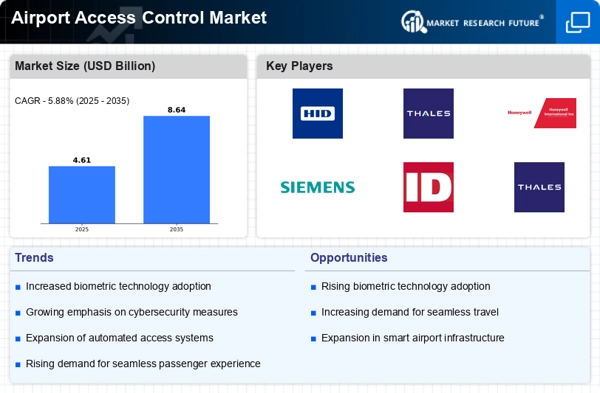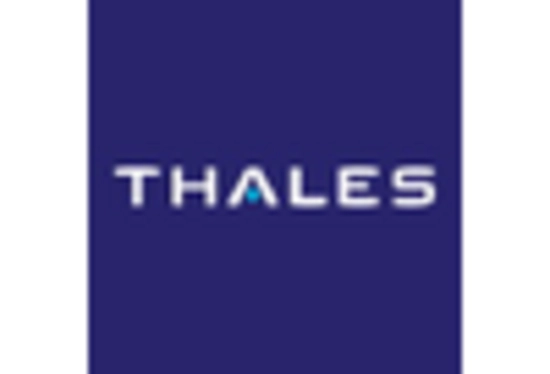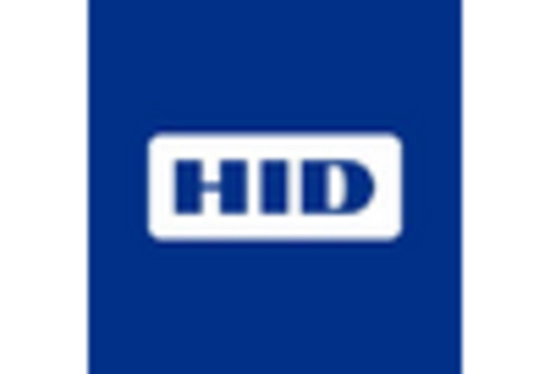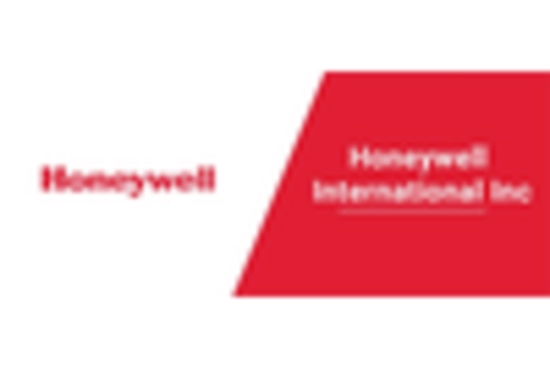Rising Passenger Traffic
The rising passenger traffic is a crucial factor influencing the Airport Access Control Market. As air travel continues to grow, airports are facing increased pressure to manage larger volumes of passengers efficiently. This surge in traffic necessitates the implementation of advanced access control systems that can handle the influx while ensuring security. Market data indicates that passenger numbers are expected to rise significantly in the coming years, prompting airports to enhance their access control measures. The need for efficient passenger flow management, coupled with security considerations, is driving investments in innovative access control technologies. This trend highlights the potential for growth within the Airport Access Control Market, as airports adapt to the demands of a rapidly evolving travel landscape.
Technological Advancements
Technological advancements play a pivotal role in shaping the Airport Access Control Market. Innovations in access control technologies, such as biometric systems, RFID, and mobile access solutions, are transforming how airports manage security and passenger flow. The integration of these technologies not only enhances security but also improves operational efficiency. For instance, biometric systems can expedite the boarding process, reducing wait times for travelers. Market data suggests that the adoption of these advanced technologies is expected to increase, as airports seek to streamline operations while maintaining high security standards. This trend indicates a promising outlook for the Airport Access Control Market, as technology continues to evolve and reshape the landscape of airport security.
Increasing Security Concerns
The Airport Access Control Market is experiencing a surge in demand due to escalating security concerns worldwide. With the rise in global travel, airports are increasingly viewed as potential targets for security breaches. This has led to a heightened focus on implementing advanced access control systems that can effectively mitigate risks. According to recent data, the market for airport security systems is projected to grow significantly, driven by the need for enhanced surveillance and access management. Airports are investing in sophisticated technologies, such as biometric identification and automated access systems, to ensure the safety of passengers and staff. This trend indicates a robust growth trajectory for the Airport Access Control Market, as stakeholders prioritize security measures to protect critical infrastructure.
Focus on Passenger Experience
The focus on passenger experience is increasingly shaping the Airport Access Control Market. Airports are recognizing the importance of providing a seamless and efficient travel experience for passengers. This has led to the adoption of access control systems that not only enhance security but also improve the overall passenger journey. Technologies such as mobile boarding passes and automated gates are being implemented to streamline the boarding process and reduce congestion. Market trends suggest that enhancing passenger experience is becoming a priority for airports, as they seek to differentiate themselves in a competitive environment. This emphasis on customer satisfaction is likely to drive further investments in access control solutions, indicating a positive outlook for the Airport Access Control Market.
Regulatory Compliance Requirements
Regulatory compliance requirements are a significant driver for the Airport Access Control Market. Governments and aviation authorities worldwide are implementing stringent regulations to ensure the safety and security of air travel. These regulations often mandate the use of advanced access control systems to monitor and manage access to restricted areas within airports. As a result, airports are compelled to invest in compliant technologies that meet these regulatory standards. The market is witnessing a shift towards solutions that not only fulfill compliance requirements but also enhance overall security measures. This trend suggests a sustained demand for access control systems, as airports strive to align with evolving regulations and maintain operational integrity within the Airport Access Control Market.

















Leave a Comment